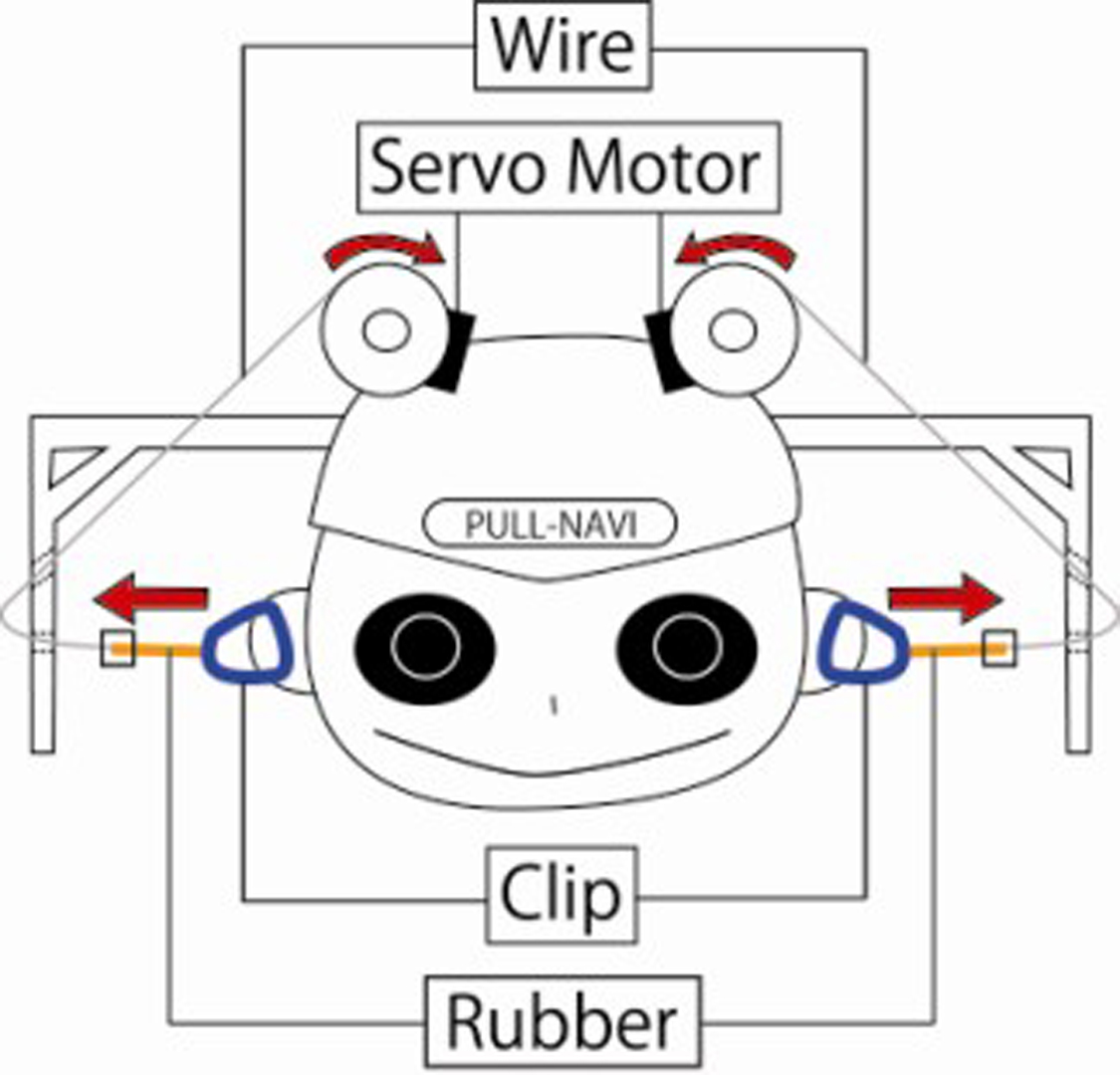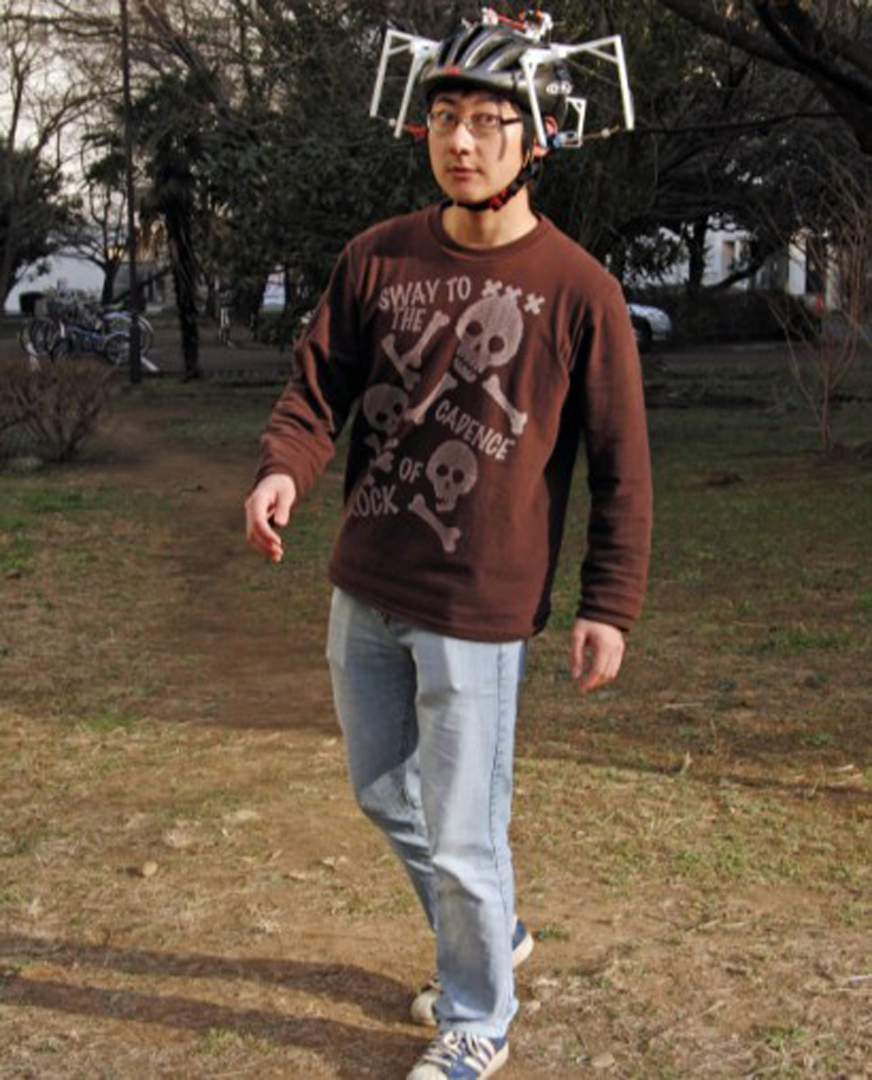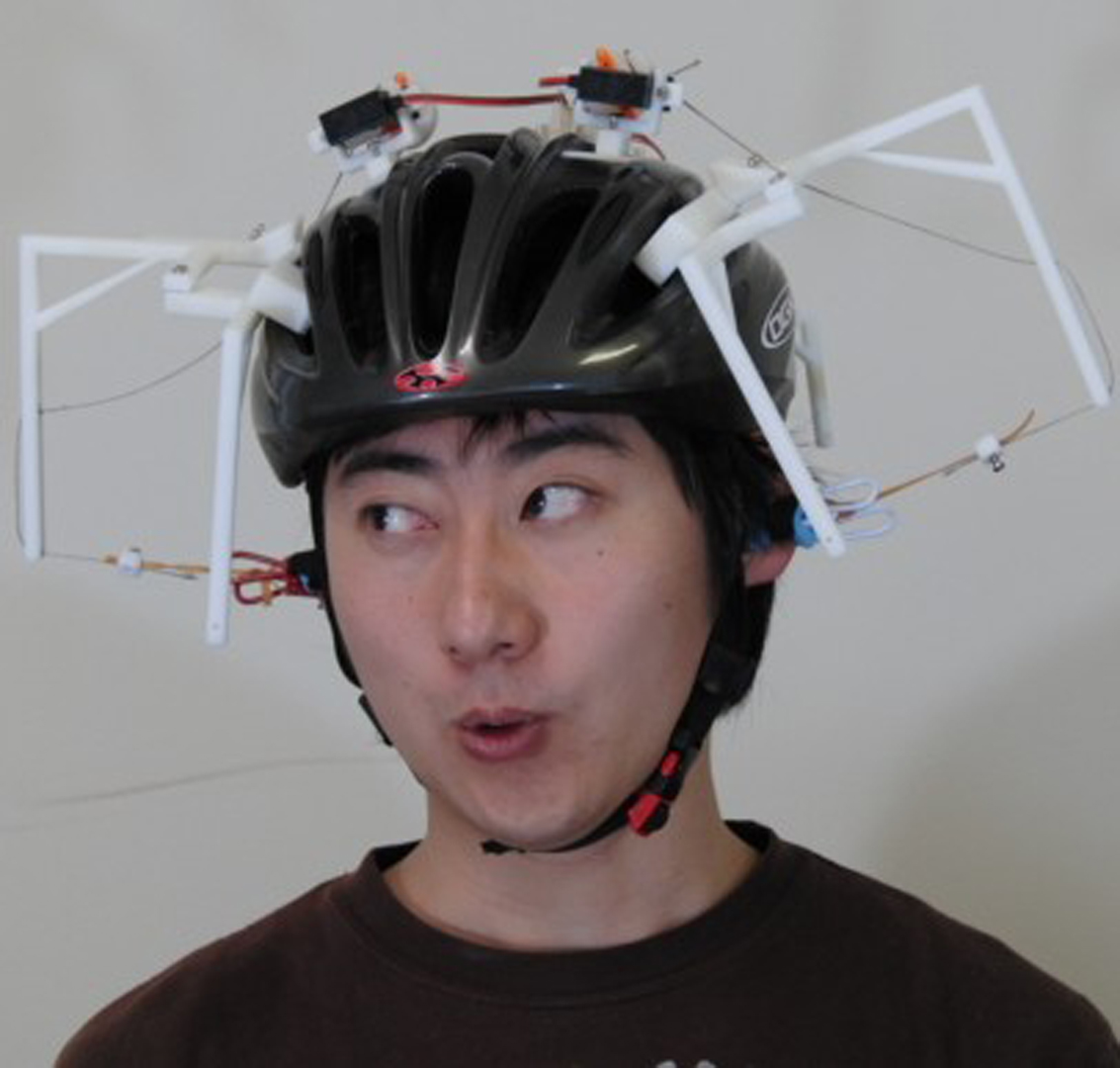“Pull-Navi: A novel tactile navigation interface by pulling the ears” by Kojima, Hashimoto, Fukushima and Kajimoto
Conference:
Experience Type(s):
Entry Number: 19
Title:
- Pull-Navi: A novel tactile navigation interface by pulling the ears
Organizer(s)/Presenter(s):
Description:
Previous studies on navigation for walking have mainly used visual or acoustic sensations, which are not intuitive and can even be dangerous because they may block visual and auditory information from the surrounding environment. Some other studies have used tactile stimulation, which is more intuitive and less annoying, on the hand or arm to generate a pseudo-pulling force [1][2][3]. However, the devices tended to become large and heavy. Maeda [4] achieved walk navigation by using Galvanic Vestibular Stimulation, but such electrical stimulation to the head has some clinical challenges for practical daily use.
We propose a new method for navigating the user by pulling their ears. There are three merits of our method.
The first merit is its naturalness. Our method requires quite a small force to pull the ears, and the users can be “tempted” to walk to the guided direction without any pain or enforced feelings. This is presumably because we were commonly pulled by our ears at a young age.
The second merit is its numerous degrees of freedom (DOF). While most previous tactile navigation systems have achieved one or at most two DOF navigations, our new method can direct full 3-DOF directions (right, left, front, back, up and down). This feature is quite useful for indoor situations, such as navigation in complex department stores or transfer at subway stations.
The final merit is its compact architecture. Since quite small forces are required for pulling the ears, we can use small and lightweight motors. Future miniaturization will be easy and we have already developed a glasses-mounted prototype to date.
Other Information:
References
[1] N. Nakamura, Y. Fukui: Development of Human Navigation System “HapticNavi” using GyroCube, XVth Triennial Congress of the International Ergonomics Association 2003, pp.352-355, 2003
[2] T. Amemiya, T. Maeda: Asymmetric Oscillation Distorts the Perceived Heaviness of Handheld Objects, IEEE Transactions on Haptics, Vol. 1, No. 1, pp. 9-18, 2008.
[3] cabboots : http://www.freymartin.de/en/projects/cabboots
[4] T. Maeda, H. Ando, T. Amemiya, M. Inami, N. Nagaya, M. Sugimoto: Shaking The World: Galvanic Vestibular Stimulation As A Novel Sensation Interface, ACM SIGGRAPH 2005 Emerging Technologies, 2005.
Additional Images:








